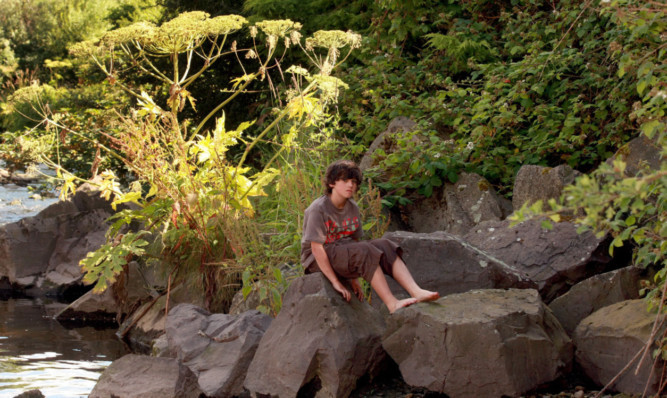Dundee residents are being urged to be watchful for the summer invasion of a giant weed with the potential to burn skin.
Each year, the giant hogweed becomes an issue for communities across Tayside, with Dundee City Council last year having to take action to protect the area around the Dighty Burn.
The Carse of Gowrie and some residential parts of Perth have also become breeding grounds for the toxic plant, which contains chemicals that react with human skin to cause blisters.
The sap also prevents the skin from protecting itself from sunlight, leading to bad sunburn and scarring and if accidentally rubbed in the eyes can even cause blindness.
Environment officers have been working in Dundee in recent years in conjunction with community groups such as Dighty Connect to spray pesticides and prevent the spread of seeds through city waterways.
As they come into full bloom once again, Environment Convener Craig Melville urged residents to avoid contact with the plants.
“We have had a big problem with giant hogweed in the recent past and it has been an issue around the Dichty Burn in particular.
“Our officers try and deal with it but it is a recurring issue and I’d urge anyone who sees the plant to refrain from touching them.
“They can be dangerous.”
The warning comes in the wake of a call by Perth residents for urgent action to cull a growing forest of poisonous 10ft weeds that has begun to encroach upon their homes.
Homeowners in Low Road and Glasgow Road have been cutting down the weed for years, but it’s now become so widespread and large that many are afraid to touch it.
Fred Mulherron, who lives in Low Road, said: “A number of householders, myself included, have been cutting down Hogweed from the front of houses for a number of years.
“Despite this it has been getting increasingly worse and the weeds are now as high as 10 feet and covered in thousands and thousands of seeds.
“They are encroaching onto gardens in Glasgow Road and Low Road and have spread along the banks of the Craigie Burn, so seeds will be carried downstream.
“Many school children take a short cut from Low Road to the Craigie backpath and could risk serious skin damage.”
The Royal Horticultural Society advises that, when controlling giant hogweed, gloves should be worn, arms and legs should be covered and ideally a face mask worn as well.
Importantly, it warns that cut plant debris, contaminated clothing and tools are potentially hazardous too and that any skin that comes in contact with the plant should be washed immediately.
Giant hogweed was introduced to Britain in the 19th century as an ornamental plant, but is now seen as a significant danger.
Unfortunately it is hardy, quick to spread and kills off rival plants by growing so fast that it blots out their sunlight.
It thrives alongside rivers and canals, meaning many unsuspecting members of the public come into contact with it.
